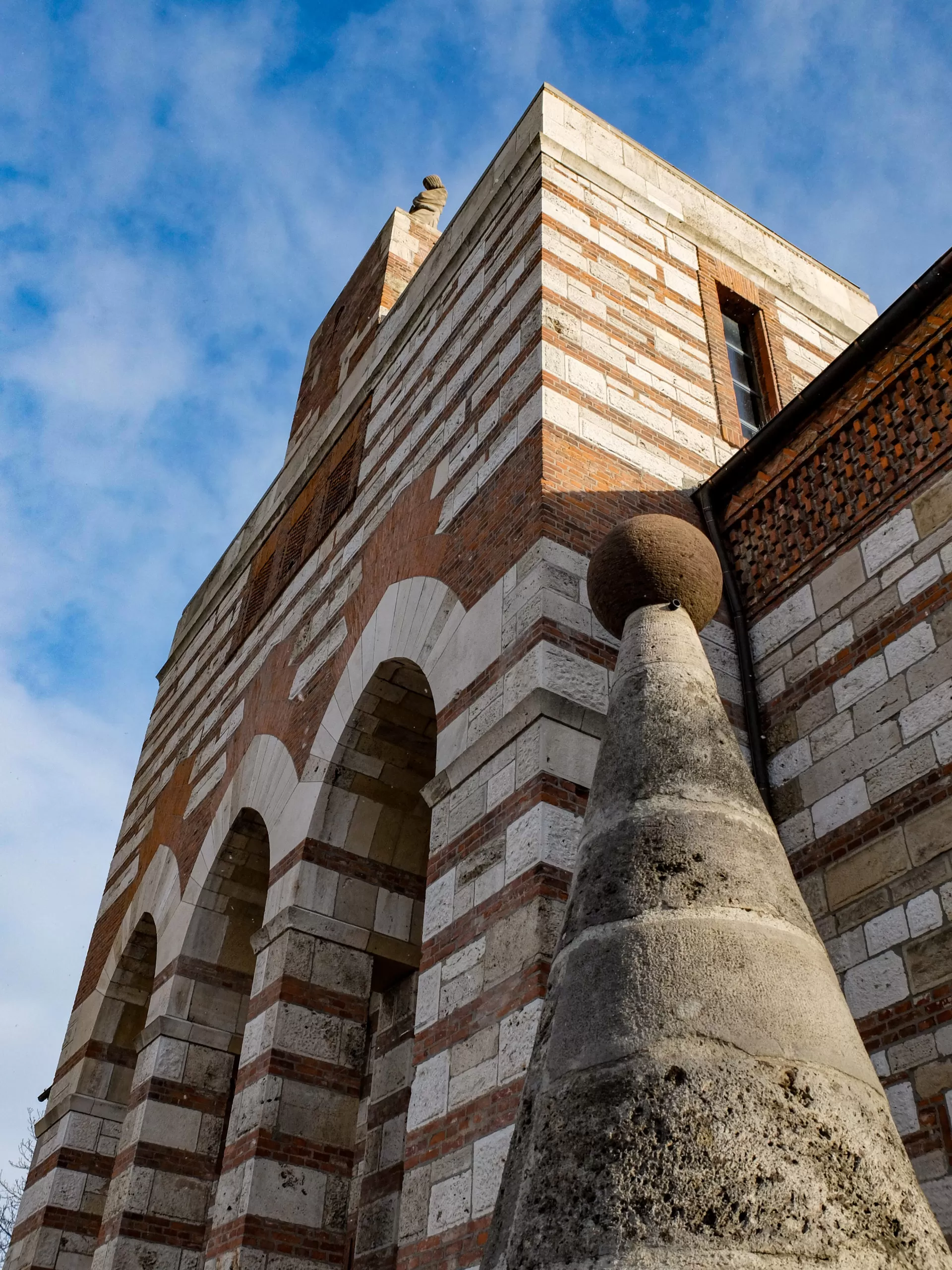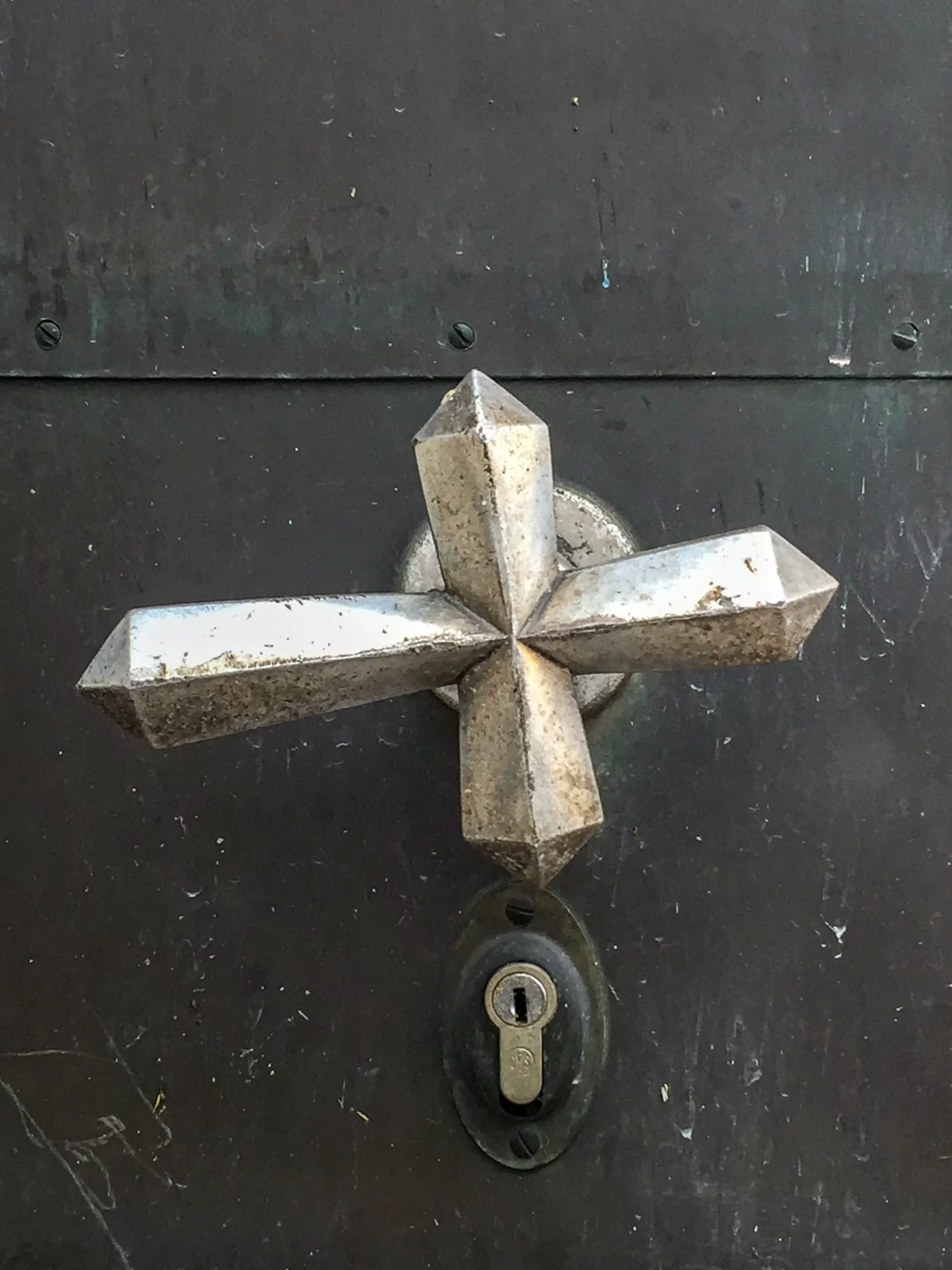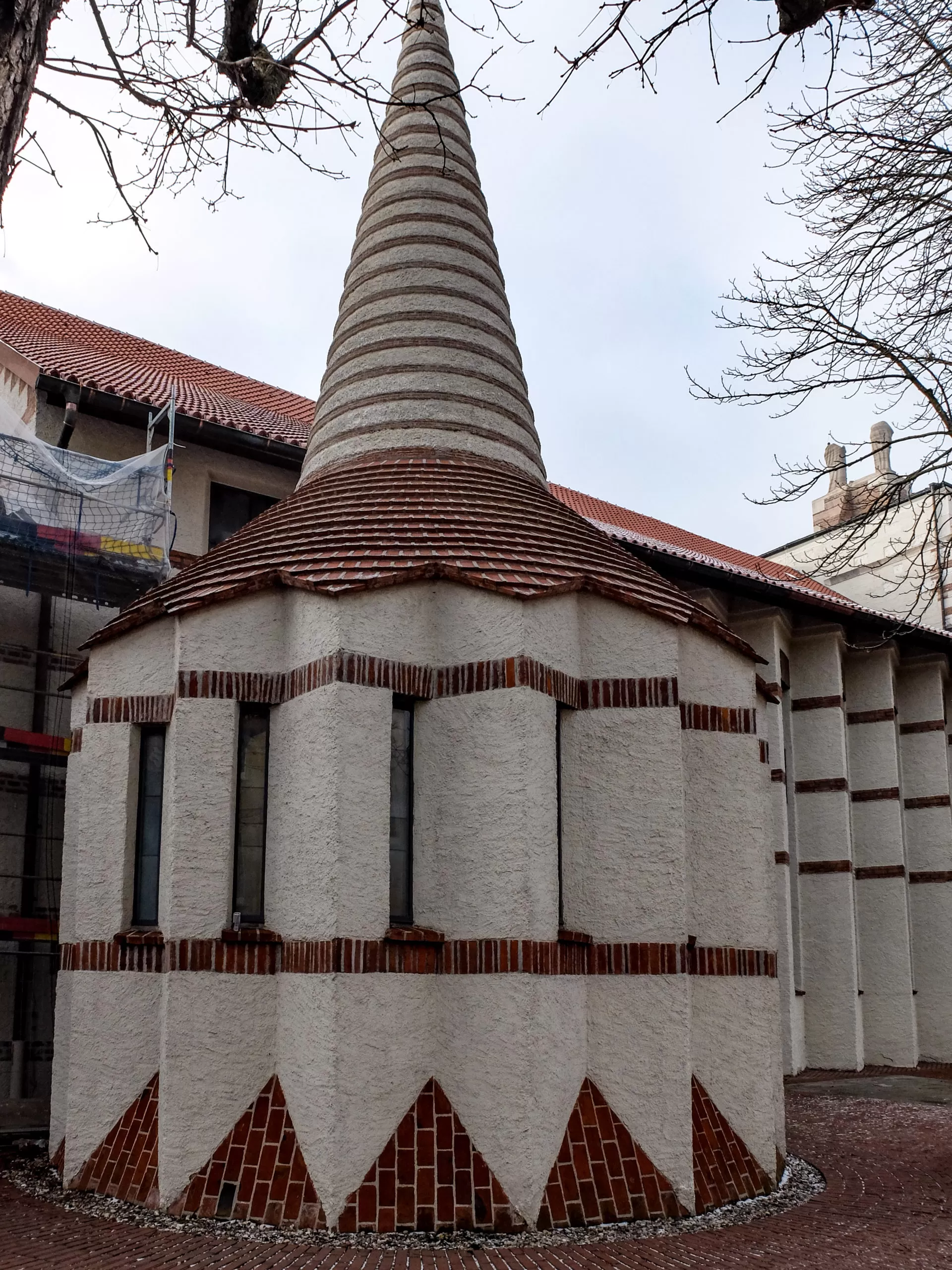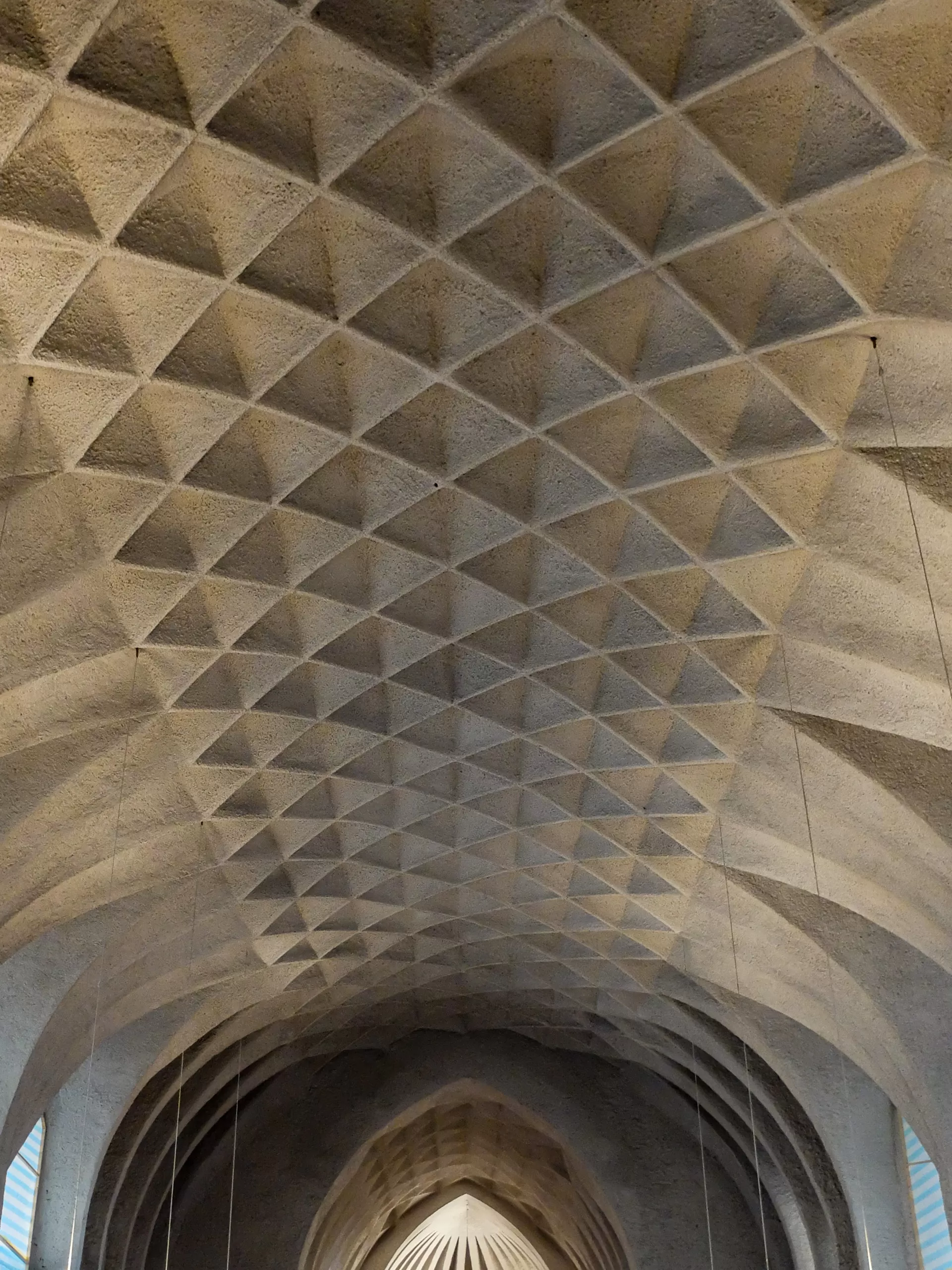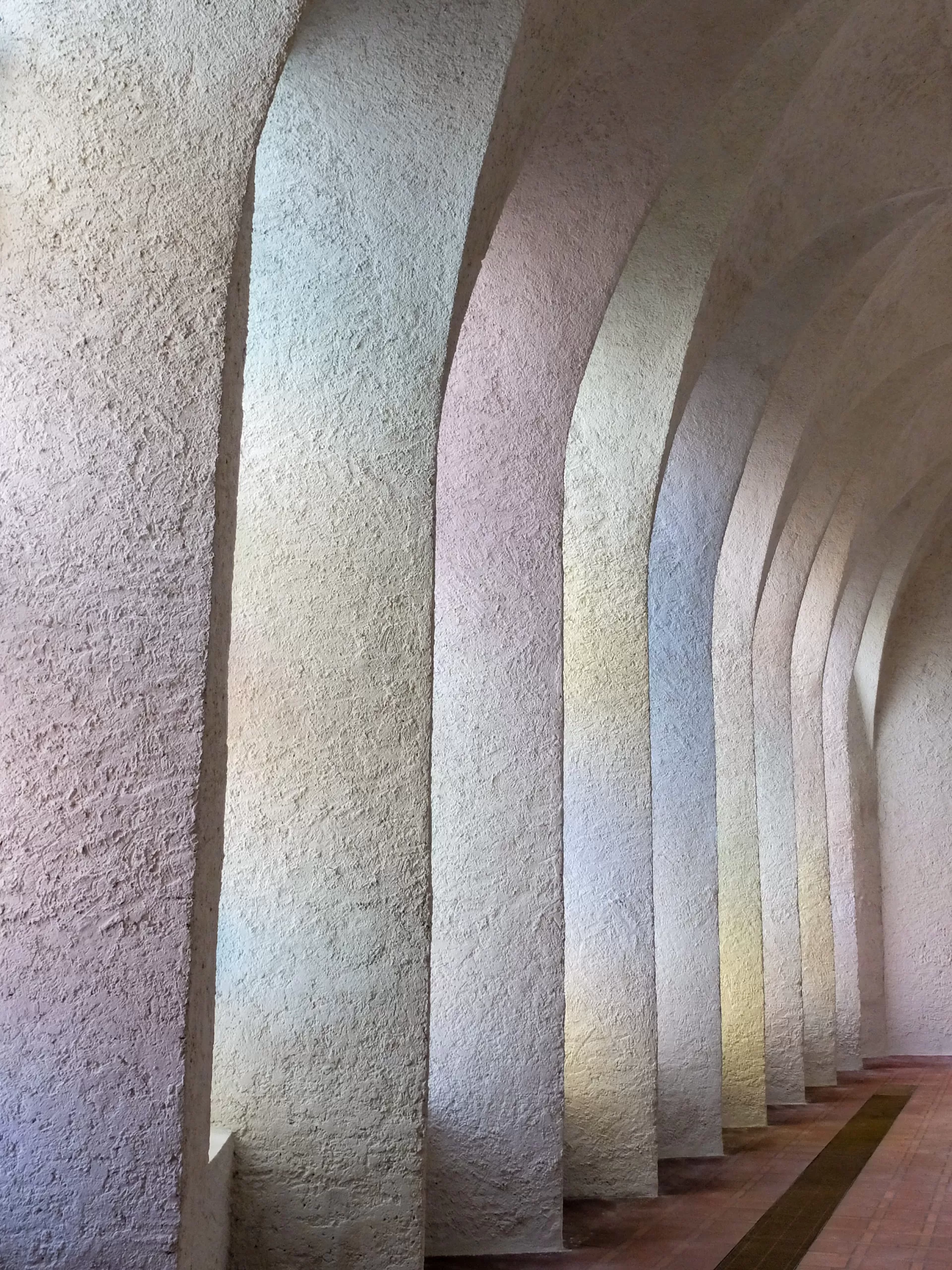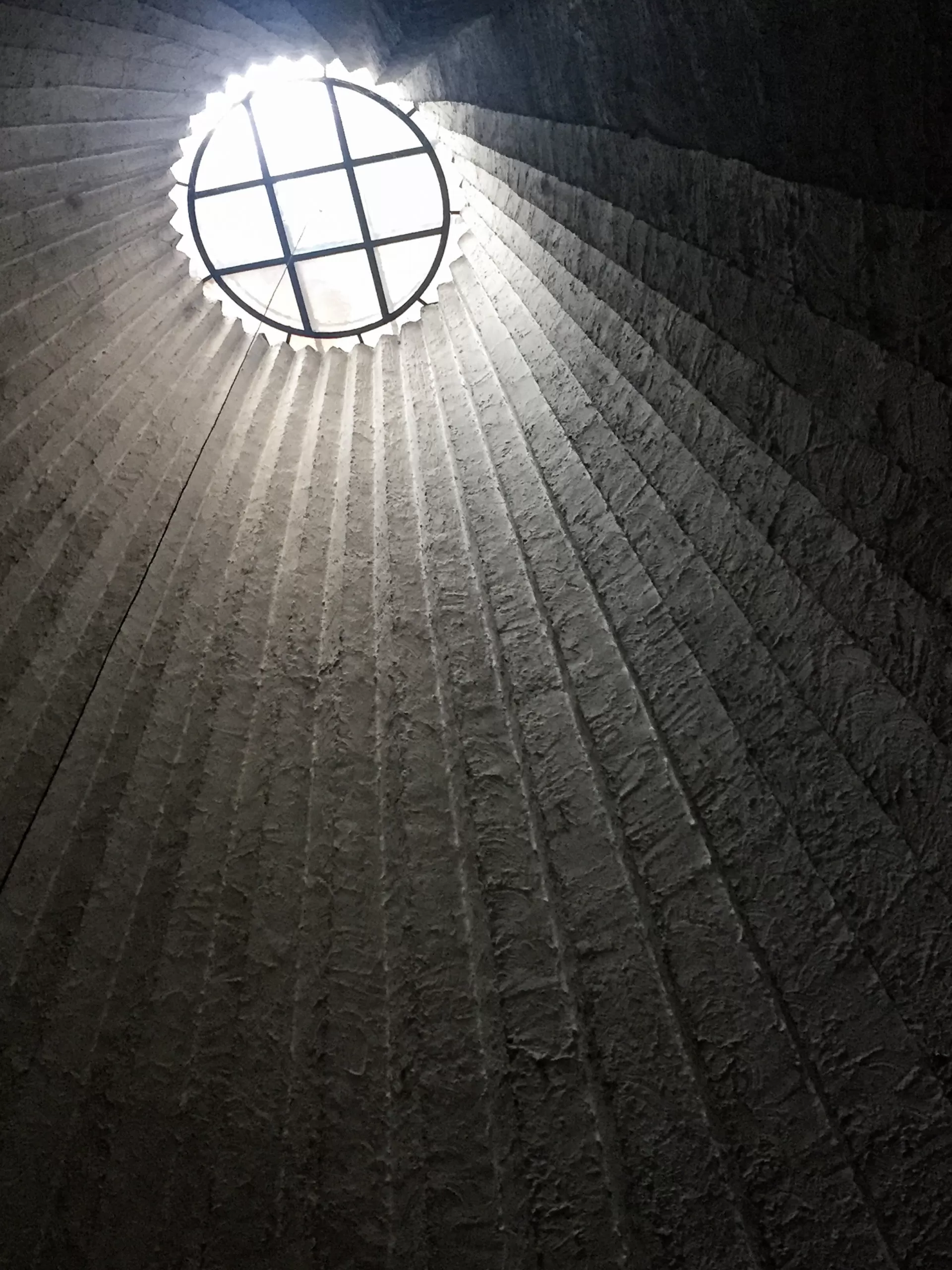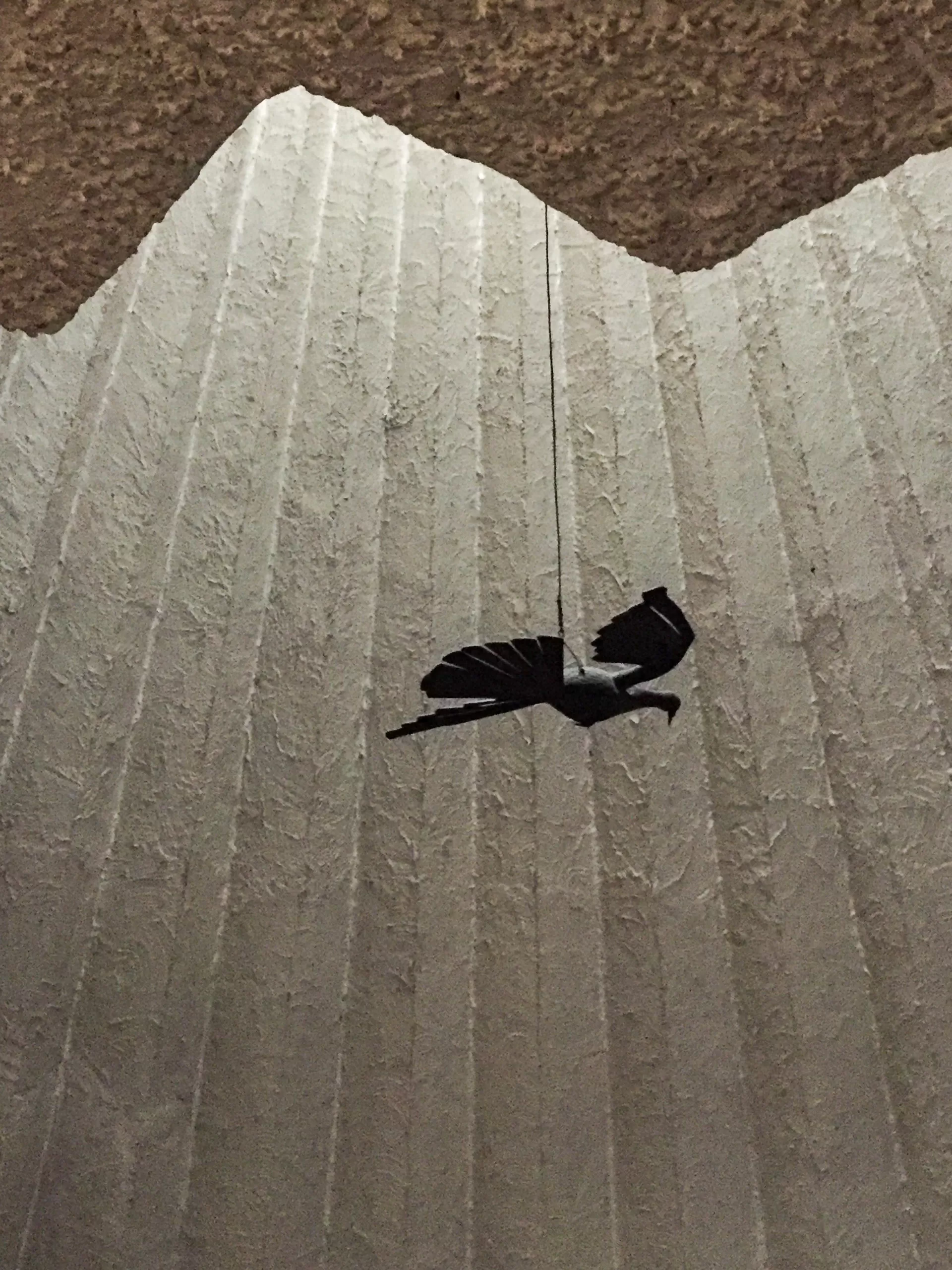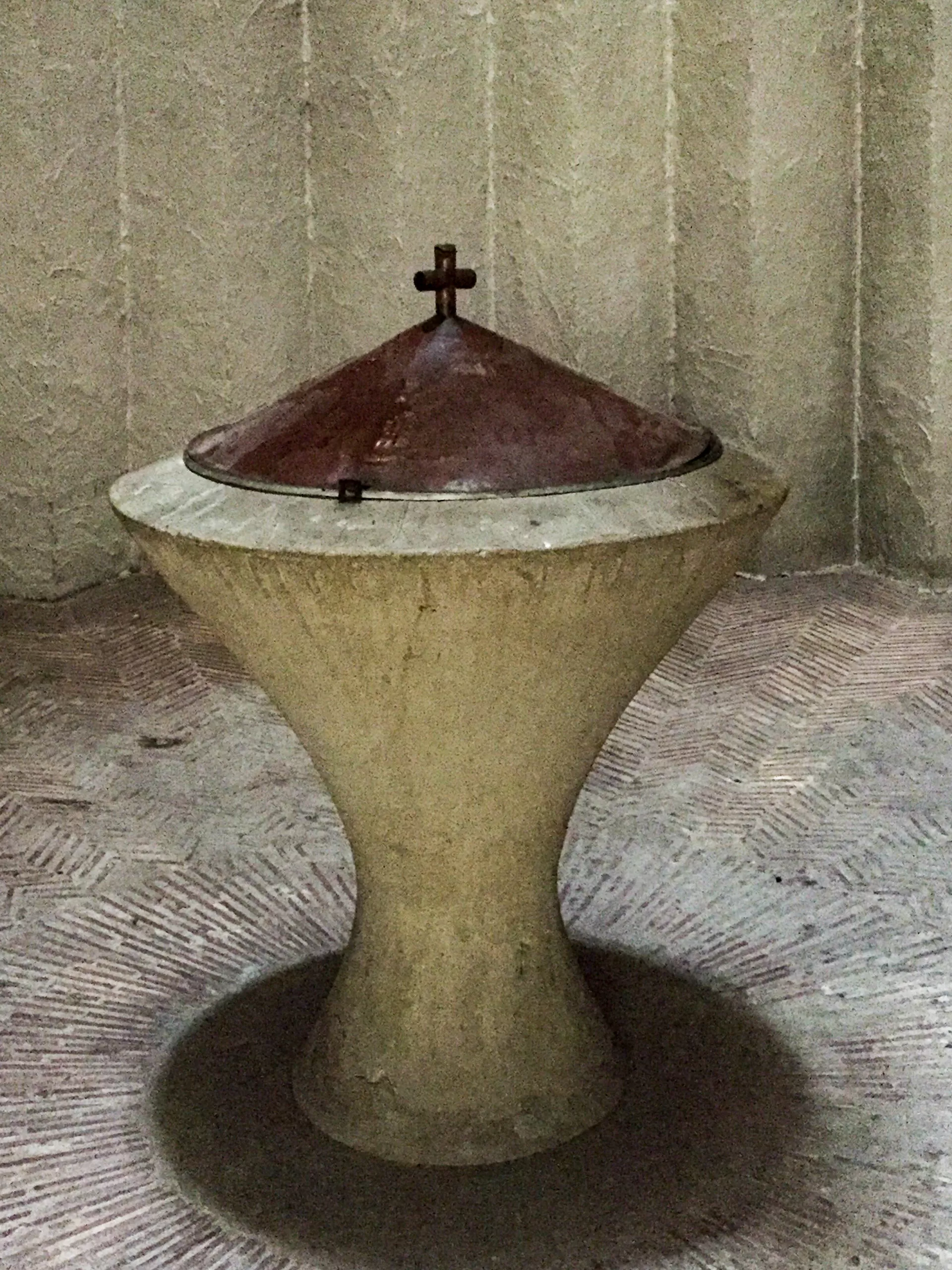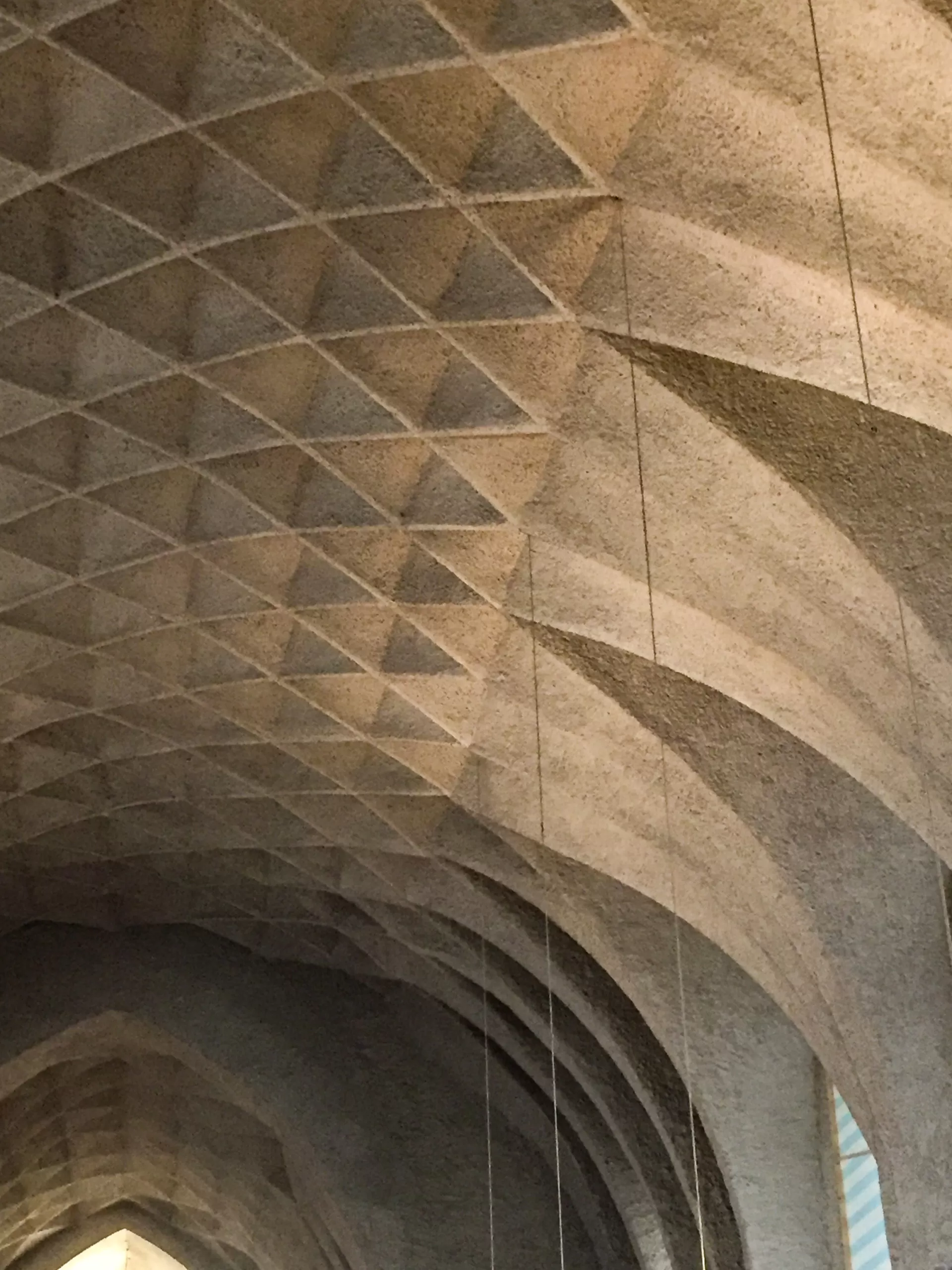1921 – 1923, 1926 – 1927
Architect: Dominikus Böhm
Johannesplatz 1, Neu-Ulm, Germany
St. Johann Baptist Catholic Parish Church in Neu-Ulm was rebuilt and redesigned between 1926 and 1927 according to plans by Dominikus Böhm.
Neu-Ulm
The independent municipality of Neu-Ulm emerged in the early nineteenth century from the village of Schwaighofen after the Napoleonic territorial reforms assigned the city of Ulm on the left bank of the Danube to Württemberg and the right bank of the Danube to Bavaria.
From 1841 Ulm and Neu-Ulm were developed into a fortress. Between 1857 and 1860, a neo-Romanesque garrison church was built, according to plans by Georg Freiherr von Stengel (1814-1882), which became too small for the growing congregation in the early twentieth century.
Church Building Association and Competition
In 1904, a church building association was founded. The architect Dominikus Böhm participated in a first competition with two designs.
Since there was not enough money for a new building due to inflation, Dominikus Böhm was initially commissioned in 1921 to redesign and expand the existing brick hall church by Stengel into a war memorial chapel.
The plans he developed provided for a fundamental change in the ground plan and the facades.
The predecessor building, which was to remain recognizable only on the choir side, was integrated into the new building as a central nave and choir with a flanking south tower.
Conversion
The modification took place in two construction phases, whereby in the first from 1921 to 1923 initially only the transverse bar was completed, which formed a monumental square wall in front of the free-standing church.
In April 1923, work came to a standstill due to inflation, and it was only after a three-year break that work could be continued.
Redesign
Instead of the originally planned basilica, Böhm now opted for a three-nave hall church with jagged, sloping walls.
The idea of vaulting the naves as concrete sprayed vaults on wire mesh and casting concrete on formwork with iron reinforcement in the central nave as well as the plan for the chapel annexes were also developed during this phase.
From April 1926 to January 1927 Böhm’s design could be implemented and the church was finally consecrated on October 8, 1927.
Key building of Modern Church Architecture
Dominkus Böhm, who was looking for ways to rhythmize the space, created with St. John Baptist an expressive spatial architecture and a key building of modern church architecture.
Church Building
The three-nave hall church is preceded in the west by a transverse bar with five entrance portals.
The exterior is structured on its monumental northwest facade by Jura limestone ashlars, demolition material from the imperial fortress of Ulm, and bands of hand-made bricks.
The side walls are expressively designed with rough plaster and horizontal brick bands.
Just like the zigzag shape and the prominent cone of the chapel extension, they are typical features of Expressionist architecture.
The lower side buildings of the transverse wing refer dynamically to the raised central section, which is crowned by a crucifixion group by Paul Seiler.
Church Square
In the forecourt, on the right, a lion created by sculptor Fritz Müller-Kamphausen still refers to St. Mark the Evangelist.
Resurrection Chapel
South of the nave is the Resurrection Chapel on a round floor plan.
Its zigzag-folded wall segments are crowned by a pointed roof cone with colorful tiles.
The fact that Böhm actually extended the existing garrison church can only be seen in the eastern section. Neo-Romanesque round arch friezes have been preserved on the chancel and tower.
The portals of the main façade lead into a vestibule that accommodates two devotional rooms and the organ loft above.
Across six bays, the corner piers taper toward the recessed chancel, which has a semicircular finial.
The two side aisles open into two chapels.
Interior
From the vestibule under the gallery, the view falls on the raised chancel and altar area, which onyx windows bathe in mystical light.
The entire interior is characterized by cast vaults of reinforced concrete. In the central nave, Böhm designed a lancet barrel with a sharply ridged cell structure, in the side aisles irregularly displaced spring vaults.
The southern aisle is adjoined first by a smaller chapel, then by the baptistery.
Through its round oculus the light falls down over the jagged wall into the otherwise windowless room.
Opposite on the north side is again a smaller passage chapel, which opens into the Resurrection Chapel.
Decor
Due to war and remodeling, little of the original furnishings survived.
The pews in the nave were designed by Böhm and are original.
Of the furnishings, the windows by Johann Thorn Prikker in particular were destroyed and the crucifixion group above the portal was damaged.
Reconstruction and Restoration
After wartime destruction in March 1945, Böhm was commissioned in 1951 to restore the pre-war state largely true to the original.
Only with regard to the lighting did he have to bow to the wishes of the congregation: the side aisle windows were widened, and the previously windowless chancel was given glass panels, which were replaced by onyx lettering again in the 1980s.
In 1973, structural damage to the foundation, west building and tower caused by the war was repaired by Franz Hartberger.
Redesign
Since the 1980s, there has been a cross in the choir as well as a tabernacle designed by the artist Reinhold Alexander Grübl, who also created the new onyx glazing and the bronze ambo.
The baptismal font in the baptistery is a design by Fritz Müller-Kamphausen, and the Holy Spirit dove in the baptistery is by Hans Wissel.
From 2016 to 2020, Sankt Johann Baptist was extensively renovated. The church has been accessible again since January 2020.

